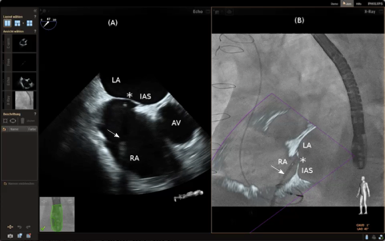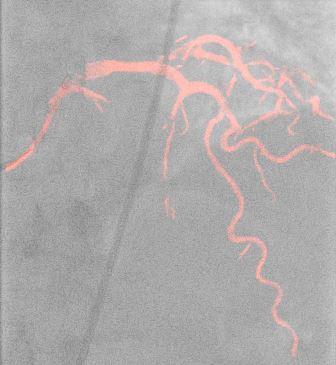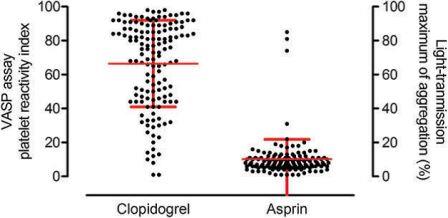Research
Topic I Imaging structural heart disease
Periprocedural imaging is crucial for success of interventions in structural heart disease. Novel real time fusion of echocardiographic and angiographic images has changed periprocedrual best practice. We investigate clinical impact of this new approach concerning efficacy and safety.

Figure 1. Transseptal puncture is depicted during LAA closure guided with EchoNav II. Transesophageal echocardiogram in short-axis view shows tenting (*) of the interatrial septum on the left side (A). EchoNavigator system Release II allows real time fusion of echocardiographic and fluoroscopic images (B). RA= right atrium; LA= left atrium; IAS= intraatrial septum; AV=aortic valve; arrows are pointing at the TSP-sheath.
Topic II Imaging coronary
The coronary patient population is characterized by seniority and multiple comorbidities. Fast procedures with reduced amount of contrast may help to reduce adverse events. The group is investigating an active road map with Philips on the basis of a master research agreement. The first in man procedures were performed in Düsseldorf in 2015. Results are going to be presented in scientific talks in 2016.

Figure 2. depicts a road map by fusion imaging which precisely matches the contrast road map. The difference is that the road map is moving exactly with systolic and diastolic heart movements Furthermore no contrast is needed to identify and work within the coronary arteries.
Topic III Platelets
Interventions in structural heart disease rely on the expirience of antithrombotic therapy in coronary interventions. Nevertheless almost no precise data exist concerning the efficacy and safety of antiplatelet therapy in structural heart interventions. Therefore our group concentrates on gaining evidence concerning the best therapeutic regimen. The first step in this approach is to get informations concerning the efficacy of standard therapy.

Figure 3. Clopidogrel shows a very large variability concerning platelet reactivity in patients after PFO/ASD closure.


